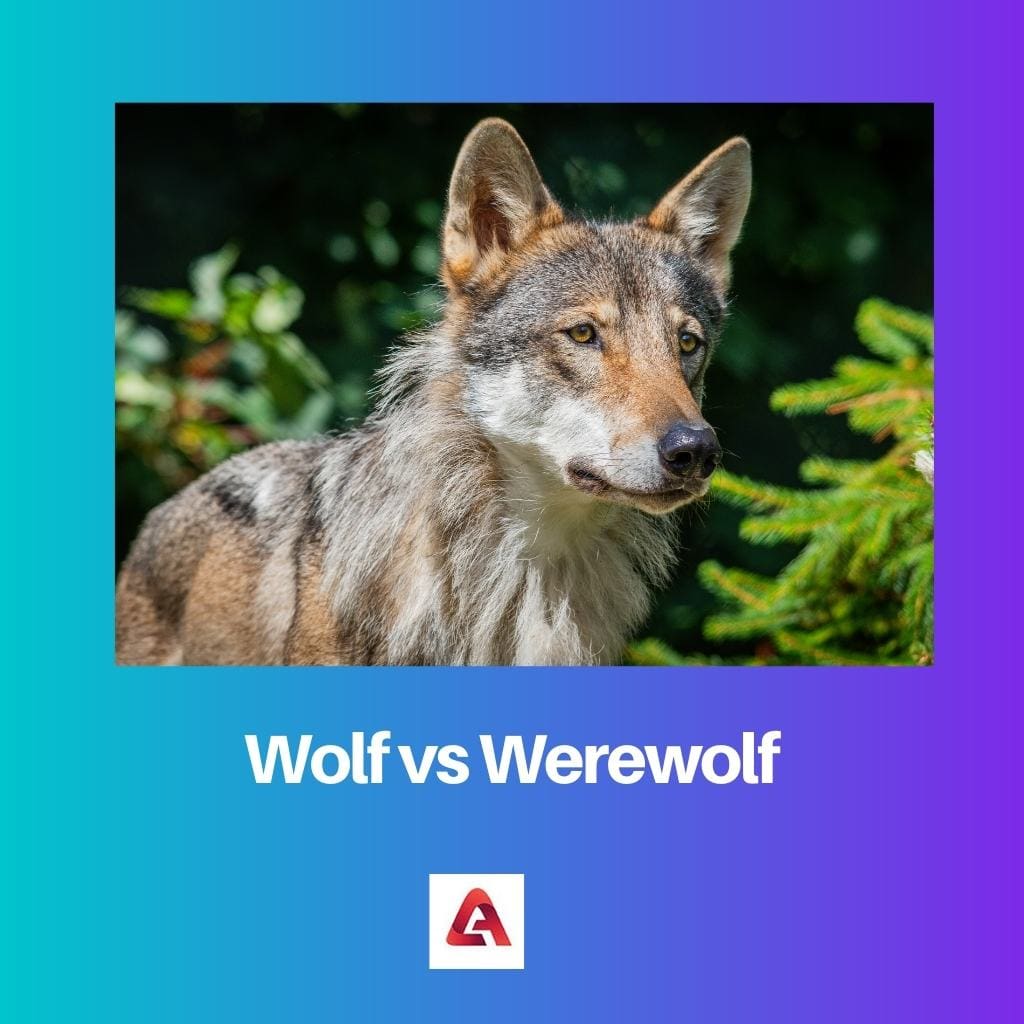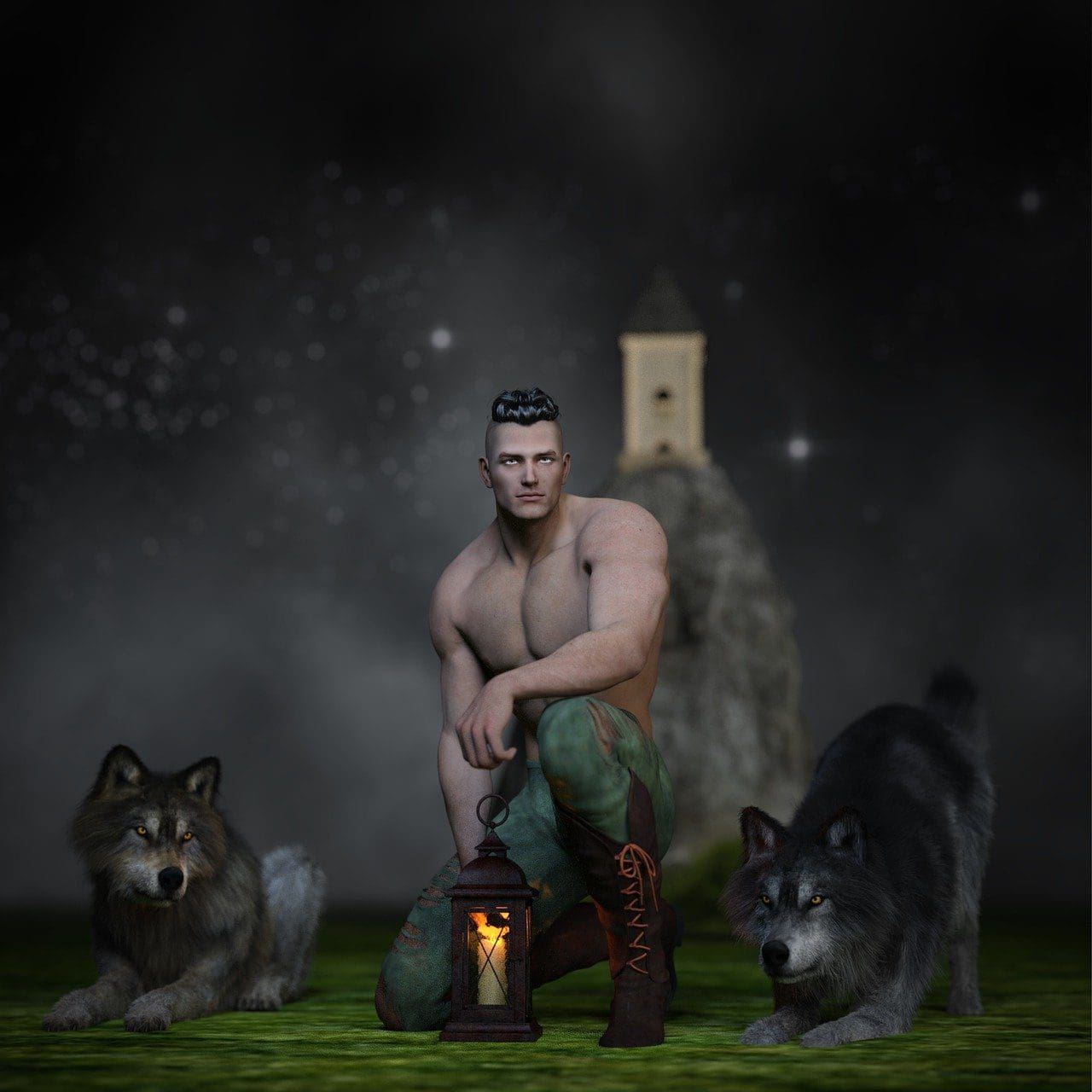In their primal clash, the wolf, guided by instinct, relies on its cunning and ferocity, honed through millennia of evolution. Conversely, the werewolf, a fusion of man and beast, harnesses supernatural strength and agility, driven by the primal urge to hunt under the moon’s haunting glow. While the wolf embodies the essence of the wild, the werewolf embodies the amalgamation of human intellect and animalistic prowess, making their confrontation a battle between nature and the supernatural.
Key Takeaways
- Fictional Elements: Wolves are real animals, while werewolves are fictional creatures that can transform from human to wolf-like forms.
- Abilities: Werewolves possess supernatural abilities, such as superhuman strength and healing, that regular wolves do not have.
- Popularity: Wolves are commonly depicted in literature and media, while werewolves are a more niche topic in horror and fantasy genres.
Wolf vs. Werewolf
The difference between a wolf and a werewolf is that a wolf is a simple four-legged creature like any other animal. In contrast, a werewolf is a mythical entity that can transform into a human being. They can be distinguished easily; they might look similar but are entirely different.

Comparison Table
| Feature | Wolf | Werewolf |
|---|---|---|
| Nature | Real, biological animal | Fictional creature, portrayed as a human who can transform into a wolf or a wolf-like creature. |
| Origin | Evolved from prehistoric canines | Origin varies depending on the specific mythology or folklore, linked to curses, magic, or bites from other werewolves. |
| Physical Form | Primarily quadrupedal, with a lean and muscular build, fur color varying depending on species (grey, black, white, etc.) | Varies depending on the specific portrayal. May be entirely wolf-like, partially human-like with wolf features, or able to shift between human and wolf forms at will. |
| Behavior | Primarily pack animals, exhibiting social behavior, hunting instincts, and territoriality. | Behavior can vary depending on the specific portrayal. May retain some human characteristics like intelligence, emotions, and social interaction, while also exhibiting wolf-like traits like hunting instincts and aggression. |
| Habitat | Forests, mountains, grasslands, tundras (depending on species) | Varies depending on the story, but depicted close to human settlements or within hidden communities of werewolves. |
| Powers/Abilities | Enhanced senses (smell, hearing, vision), sharp teeth and claws, strength, stamina, pack hunting strategies | Varies depending on the specific mythology or story. May possess superhuman strength, speed, senses, healing abilities, and the ability to control other wolves or werewolves. |
| Vulnerability | Disease, injuries, human activities (hunting, habitat destruction) | Varies depending on the specific portrayal. May be vulnerable to silver bullets, wolfsbane (a poisonous plant), or specific rituals or spells. |
What is Wolf?
Wolves, scientifically known as Canis lupus, are majestic and highly intelligent carnivorous mammals belonging to the Canidae family, renowned for their social structure, hunting prowess, and symbolic significance across cultures.
Physical Characteristics
Wolves possess a robust and muscular build, with thick fur adapted to various climates, ranging from arctic tundra to temperate forests. Their coats come in a spectrum of colors, including shades of gray, brown, black, and white, aiding in camouflage within their natural habitats. Wolves have keen senses, including acute hearing and a strong sense of smell, crucial for communication, navigation, and hunting.
Behavior and Social Structure
Wolves are inherently social animals, forming tight-knit packs led by an alpha pair – the dominant male and female. Pack dynamics are essential for survival, facilitating cooperative hunting, raising offspring, and defending territory. Communication within the pack is intricate, involving howls, body language, and vocalizations, reinforcing social bonds and coordinating activities.
Ecological Role
As apex predators, wolves play a vital role in ecosystem balance by regulating prey populations, preventing overgrazing, and influencing the behavior of herbivores. Their presence fosters biodiversity and habitat health, creating ripple effects throughout entire ecosystems.
Conservation Status
Wolves have faced historical persecution due to conflicts with humans over livestock predation and misconceptions about their threat to safety. Conservation efforts have led to the recovery of some wolf populations in certain regions, but many subspecies remain endangered or threatened due to habitat loss, poaching, and human encroachment. Continued conservation initiatives, habitat protection, and public education are crucial for ensuring the long-term survival of these iconic predators.

What is Werewolf?
A werewolf, depicted in folklore and mythology, is a fantastical creature embodying a hybrid form of a human and a wolf. These beings are associated with supernatural abilities, transformations, and the moon’s influence, creating a captivating and eerie archetype in popular culture.
Origins and Folklore
The concept of werewolves has roots in various cultures worldwide, with tales dating back centuries. In European folklore, werewolves were portrayed as cursed individuals who transformed into wolves during full moons, compelled to roam the night in search of prey. These stories served as cautionary tales, warning against the dangers of unchecked primal instincts and the consequences of straying from societal norms.
Characteristics and Traits
Werewolves are commonly depicted as possessing immense strength, heightened senses, and accelerated healing abilities in their lupine form, reflecting a fusion of human intellect and animalistic prowess. Their transformations are triggered by the full moon, symbolizing the uncontrollable influence of celestial bodies on earthly beings. In human form, werewolves may exhibit signs of their lupine nature, such as increased aggression, hairiness, or a connection to nature and the wilderness.
Cultural Impact and Representation
Werewolves have captured the imagination of storytellers across literature, film, and other forms of media, becoming iconic figures in the horror genre and beyond. From classic novels like “Dracula” by Bram Stoker to modern film franchises like “The Twilight Saga” and “Underworld,” werewolves continue to fascinate audiences with their complex duality and primal allure. Their portrayal explores themes of identity, transformation, and the struggle between humanity and beastliness.
Interpretations and Symbolism
Beyond their role in entertainment, werewolves hold symbolic significance, representing a primal aspect of human nature that lurks beneath the surface. They embody themes of transformation, inner conflict, and the thin line between civilization and savagery. Through their mythos, werewolves invite contemplation on the darker aspects of the human psyche and the eternal struggle to reconcile our dualistic nature.

Main Differences Between Wolf and Werewolf
- Nature:
- Wolf: A real, existing carnivorous mammal species belonging to the Canidae family.
- Werewolf: A mythical or fictional creature, depicted as a human-wolf hybrid with supernatural abilities.
- Origins:
- Wolf: Originating from natural evolutionary processes, wolves have been a part of various ecosystems for millions of years.
- Werewolf: Stemming from folklore and mythology, werewolves have roots in cultural tales and legends across different civilizations.
- Characteristics:
- Wolf: Possesses a physical form consistent with a natural wolf, including a robust build, thick fur, keen senses, and social behaviors.
- Werewolf: Often depicted as a human transforming into a wolf-like creature, exhibiting supernatural traits such as increased strength, heightened senses, and accelerated healing abilities.
- Behavior:
- Wolf: Exhibits social behaviors within a pack structure, engaging in cooperative hunting, communication, and territorial defense.
- Werewolf: Often portrayed as solitary or driven by primal urges, especially during full moon transformations, with a focus on hunting and survival instincts.
- Reality vs. Fiction:
- Wolf: Exists in the natural world as a tangible species, subject to scientific study and observation.
- Werewolf: Exists purely within the realm of fiction and mythology, serving as a fantastical creature in storytelling and popular culture.




